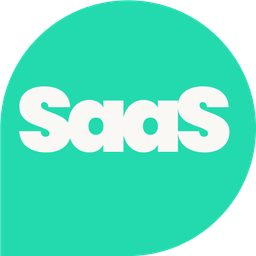There has been a growing demand for cloud-based solutions as more organizations look for new ways to keep their operations agile and cost-effective. SaaS products have become valuable tools for helping to achieve this, giving organizations opportunities for unprecedented scale and flexibility when growing their businesses.
However, as a SaaS provider, the increasingly competitive nature of the industry is making it increasingly more challenging to stand out in a saturated market. To maximize market share and increase the number of new leads coming in, here are some effective strategies you can put into practice.
Get to know your customers
In order to effectively connect with potential customers, you first need to understand what drives their decision-making, especially when it comes to finding solutions to their everyday problems. A great place to start here is to create buyer personas that can help you create insights about your target audience that can inform your sales and communication strategies.
Regardless of whether you’re marketing a new next-generation software presenting more efficient ways to handle daily tasks, the more you learn about your audience, the better you’ll position these products as a high-value investment.
Work on your value proposition
One of the most important things to have in place when marketing SaaS products is a great sales presentation and value proposition. Although there is no rigid formula for achieving this, any strong value proposition should effectively convey all of the unique advantages of your product with the goal of increasing new conversions.
To create a good value proposition, you’ll want to take a step back and put yourself in the customer’s shoes. Really understand the struggles they’re experiencing and the impact it can have on them and their business. Then, develop a way to clearly demonstrate how your SaaS offering addresses those issues while saving the customer time and money.

Choose the right pricing strategy
As you might expect, your SaaS pricing strategy will impact the purchasing decisions of your potential customers. However, being the cheapest solution on the market isn't the ideal strategy for your business.
The great thing about many SaaS solutions is that there is flexibility in creating tiered pricing plans. These can allow customers to customize a final solution to their liking and within a budget that works for them.
You should also consider the option of providing new leads with free trial periods or live demonstrations in order to give them firsthand experience using the solution and to help build more confidence in your organization’s ability to meet their needs.
Select an optimal inbound marketing approach
Being able to improve your online presence over time is crucial for attracting new leads. A great way to achieve this is investing in inbound content marketing initiatives.
When you take the time to create valuable content such as well-researched blog posts or whitepapers, it not only provides more value to your audience but is a great way to increase the organic traffic you bring to your website.
High-quality, linkable assets can help you gain referrals from reputable websites that create backlinks to your website. This, in turn, signals to search engines like Google that you’re a relevant source of quality information. All of this can quickly improve your rankings on search engine results pages (SERPs) and can give you a steady stream of free web traffic.
Spend time qualifying your leads
It’s no secret that bringing in more leads can help you to close more business. However, this doesn’t mean that every lead you bring in should be closely followed up with. To optimize your conversion rates, you’ll want to implement certain strategies that help you identify, categorize, and prioritize your leads accordingly.
To do this, you’ll want to include specific questions in your signup forms to gather information about your customer's software needs, any budget constraints, and their timeframes for making a purchase. This will let you strategically allocate your resources and place focus on those with the highest conversion potential.

Get to know selling cycles in your industry
The sales process for SaaS organization typically differs from other industries in terms of the duration necessary to nurture leads effectively. For example, government agencies evaluating solutions like Next Generation 911 infrastructure improvements will typically require more time to make decisions due to the number of necessary approvals required.
It’s important to have a good grasp of these selling cycles and align your marketing strategies to support them. You’ll also want to avoid prematurely dismissing promising leads with longer timelines while on the search for more timely opportunities for conversion.
Create a more streamlined onboarding process
You’ll want to keep in mind that the SaaS sales process doesn’t end once you’ve made a sale. First impressions of your business are critical, and a smooth onboarding process is critical for ensuring customer satisfaction and improving loyalty to your brand.
When you create a seamless onboarding experience, it helps your customers fully utilize your solution from the very beginning. By providing helpful information and resources from the beginning it contributes to more positive outcomes and builds a strong foundation for success.
Support your products well
Providing top-notch customer support is important for helping to differentiate your brand and can also help to improve word-of-mouth referrals.
Spend time implementing self-service options on your website, such as knowledge bases or AI-enabled features like customer service chatbots. By creating accessible support channels such as email, chat, and phone support it makes sure your customers continue to feel valued and confident in their subscriptions.
Start elevating your SaaS sales opportunities
The high reliance on SaaS solutions today presents a great opportunity for providers to quickly expand their clientele. By implementing the strategies discussed, you can significantly improve your sales and marketing efforts while positioning your business for long-term success.




